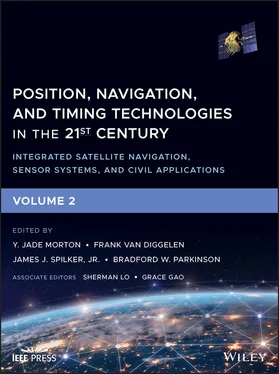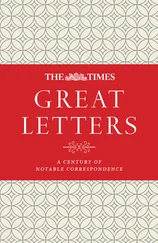33 33 C. Gentner and T. Jost, Indoor Positioning Using Time Difference of Arrival between Multipath Components,” Proceedings of 4th International Conference on Indoor Positioning and Indoor Navigation (IPIN 2103), Montbeliard, France, October 2013.
34 34 Wikipedia, DVB‐T, https://en.wikipedia.org/wiki/DVB‐T.
35 35 Y. Wu, E. Pliszka, B. Caron, P. Bouchard, G. Chouinard, “Comparison of terrestrial DTV transmission systems: the ATSC 8‐VSB, the DVB‐T COFDM, and the ISDB‐T BST‐OFDM,” IEEE Transactions on Broadcasting, Vol. 46, N. 2, 101–113, June 2009.
36 36 J. Song, Z. Yang, and J. Wang (eds.), Digital Terrestrial Television Broadcasting: Technology and System (The ComSoc Guides to Communications Technologies), IEEE Press, Wiley, July 2015.
37 37 ATSC, ATSC Digital Television Standard (A/53), Revision E, December 27, 2005, with Amendment No. 1 dated 18 April 2006.
38 38 J.C. Whitaker, DTV Handbook: The Evolution in Digital Video, New York: McGraw‐Hill, 2001.
39 39 W. Fischer, Digital Video and Audio Broadcasting Technology: A Practical Engineering Guide (Signals and Communication Technology), 3rd Ed., Springer, June 2010.
40 40 Y. Wu, X. Wang, R. Citta, B. Ledoux, S. Lafleche, and B. Caron, “An ATSC DTV receiver with improved robustness to multipath and distributed transmission environments,” IEEE Transactions on Broadcasting, Vol. 50, No. 1, 32–40, March 2004.
41 41 ATSC, ATSC Mobile DTV Standard, Part 1 – ATSC Mobile Digital Television System, Document A/153 Part 1:2011, 1 June 2011.
42 42 M. Simon, Understanding ATSC Mobile DTV Physical Layer, Whitepaper 09.2010‐1, Rohde & Schwarz.
43 43 X. Wang, Y. Wu, and J. Chouinard, “A new position location system using DTV transmitter identification watermark signals,” EURASIP Journal on Applied Signal Processing, Vol. 2006, 1–11, 2006.
44 44 ETSI, Digital Video Broadcasting (DVB); Framing Structure, Channel Coding and Modulation for Digital Terrestrial Television, ETSI EN 300 744 V1.5.1 (2004‐06).
45 45 S. Pasricha, “Chapter 37: Overview of Indoor Navigation Techniques,” in Position, Navigation, and Timing Technologies in the 21st Century: Integrated Satellite Navigation, Sensor Systems, and Civil Applications, Y.T.J. Morton, F. van Diggelen, J.J. Spilker, Jr., and B.W. Parkinson (Eds.), Wiley, 2020.
46 46 Z. Kassas, “Chapter 38: Navigation with Cellular Signals‐of‐Opportunity,” in Position, Navigation, and Timing Technologies in the 21st Century: Integrated Satellite Navigation, Sensor Systems, and Civil Applications, Y.T.J. Morton, F. van Diggelen, J.J. Spilker, Jr., and B.W. Parkinson (Eds.), Wiley, 2020.
47 47 K. Kauffman, “Chapter 42: Adaptive Radar Navigation System,” in Position, Navigation, and Timing Technologies in the 21st Century: Integrated Satellite Navigation, Sensor Systems, and Civil Applications, Y.T.J. Morton, F. van Diggelen, J.J. Spilker, Jr., and B.W. Parkinson (Eds.), Wiley, 2020.
48 48 T.D. Chiueh and P.Y. Tsai, OFDM Baseband Receiver Design for Wireless Communications, John Wiley & Sons, 2007.
49 49 J. Huang and L.L. Presti, “DVB‐T positioning with a one‐shot receiver,” International Conference on Localization and GNSS, Turin, 2013, 1–5.
50 50 S.F Cotter and B.D. Rao, “Spare channel estimation via matching pursuit with application to equalization,” IEEE Transactions on Communications, Vol. 50, No. 3, 374–377, March 2002.
51 51 D. Serant, Advanced signal processing algorithms for GNSS/OFDM receiver, Thèse Doctorale de l’Université de Toulouse, November 2012.
52 52 P. Thevenon, S‐band air interface for navigation systems: A focus on OFDM signals, Thèse Doctorale de l’Université de Toulouse, November 2010.
53 53 W. Li and J.C. Preisig, “Estimation of rapidly time‐varying sparse channels,” IEEE Journal of Oceanic Engineering, Vol. 32, No. 4, 927–939, October 2007.
54 54 L. Chen, O. Julien, P. Thevenon, D. Serrant, A.G. Pena, and H. Kuusniemi, “TOA estimation for positioning with DVB‐T signals in outdoor static tests,” IEEE Transactions on Broadcasting, Vol. 61, No. 4, 625–638, December 2015.
55 55 J.A. del Peral‐Rosado, Evaluation of the LTE positioning capabilities in realistic navigation channels, Universitat Autonoma de Barcelona PhD Dissertation, 2014.
56 56 F. Knutti, M. Sabathy, M. Driusso, H. Mathis, and C. Marshall, “Positioning using LTE signals,” European Navigation Conference, Bordeaux, France, April 2015.
57 57 C. Yang and M. Miller, “Novel GNSS receiver design based on satellite signal channel transfer function/impulse response,” Proceedings of ION GNSS’05, Long Beach, California, September 2005.
58 58 C. Yang, M. Miller, and T. Nguyen, “Symmetric Phase‐Only Matched Filter (SPOMF) for frequency‐domain software GPS receivers,” ION Journal: Navigation, Vol. 54, No. 1, 31–42, Spring 2007.
59 59 C. Yang, T. Nguyen, and M. Miller, “GNSS signal channel impulse response estimation: Modified inverse filter vs. Wiener filter,” ION GNSS’2009, Savannah, Georgia, September 2009.
60 60 K. Shi, E. Serpedin, and P. Ciblat, “Decision‐directed fine synchronization in OFDM systems,” IEEE Transactions on Communications, Vol. 53, No. 3, 408–412, March 2005.
61 61 L. Chen, L. Yang, and R. Chen, “Time‐delay tracking for positioning in DTV networks,” Proceedings of the 2nd International Conference and Exhibition on Ubiquitous Positioning, Indoor Navigation and Location‐Based Service, Helsinki, Finland, 3–4 October 2012.
62 62 C. Yang, L. Chen, O. Julien, R.Z. Chen, and A. Soloviev, “Carrier phase tracking of OFDM‐based DVB‐T signals for precision ranging,” ION GNSS+ 2017, Portland, Oregon, September 2017.
63 63 Association of Radio Industries and Businesses (ARIB), Transmission System for Digital Terrestrial Broadcasting, STD‐B31, V1.6E2, November 2005.
64 64 J.J. Spilker, Jr. and M. Rabinowitz, Position location using Integrated Service Digital Broadcasting‐Terrestrial (ISDB‐T) broadcast television signals, Pat. No. US 6,952,182, October 4, 2005.
65 65 CNS, Standardization Administration of the People’s Republic of China, Framing Structure, Channel Coding and Modulation for Digital Television Terrestrial Broadcasting System, Chinese National Standard GB20600 ( http://sac.gov.cn), 2006.
66 66 R. Karamchedu, “Does China have the best digital television standard on the planet?” IEEE Spectrum, May 2009.
67 67 M. Liu, M. Crussiere, J.F. Helard, and O.P. Pasquero, “Analysis and performance comparison of DVB‐T and DTMB systems for terrestrial digital TV,” Proceedings of the 11th IEEE International Conference on Communications Systems, Guangzhou, China, November 2008, 1399–1404.
68 68 S. Tang, K. Peng, K. Gong, J. Song, C. Pan, and Z. Yang, “Robust frame synchronization for Chinese DTTB system,” IEEE Transactions on Broadcasting, Vol. 54, No. 1, 152–158, March 2008.
69 69 J. Wang, Z. Yang, C. Pan, and L. Yang, “A combined code acquisition and symbol timing recovery method for TDS‐OFDM,” IEEE Transactions on Broadcasting, Vol. 49, No. 3, 304–308, September 2003.
70 70 F. Yang, K. Peng, J. Song, C. Pan, and Z. Yang, “Guard‐interval mode detection method for Chinese DTTB system,” Workshop Proceedings of IEEE International Conference on Communications, Circuits, and Systems, 2008, 216–219.
71 71 F. Yang, J. Wang, J. Wang, J. Song, and Z. Yang, “Channel estimation for the Chinese DTTB System based on a novel iterative PN sequence reconstruction,” Workshop Proceedings of IEEE International Conference on Communications, 2008, 286–289.
72 72 G. Liu and S.V. Zhidkov, “A composite PN‐correlation based synchronizer for TDS‐OFDM receiver,” IEEE Transactions on Broadcasting, Vol. 56, No. 1, 77–85, December 2010.
Читать дальше











